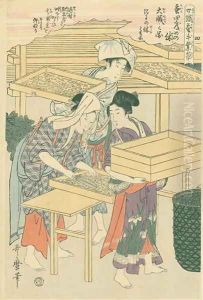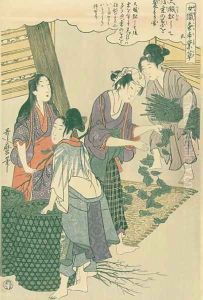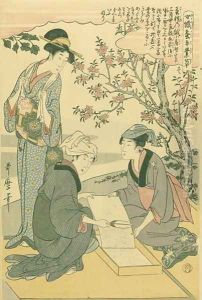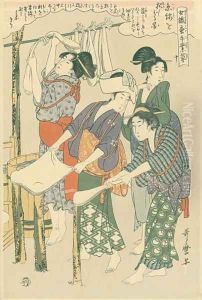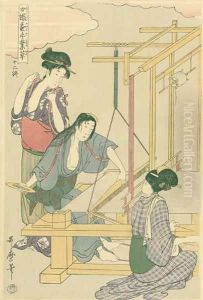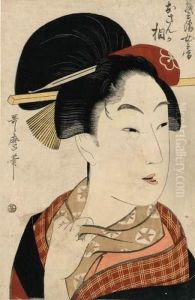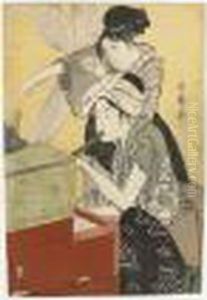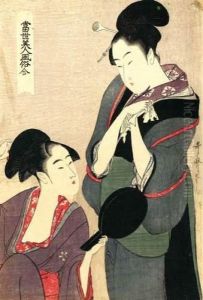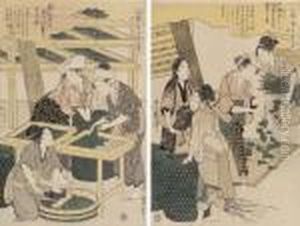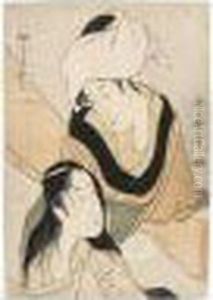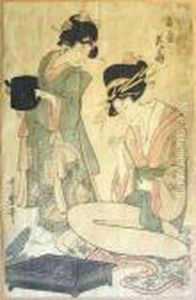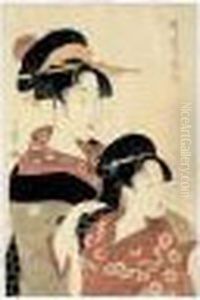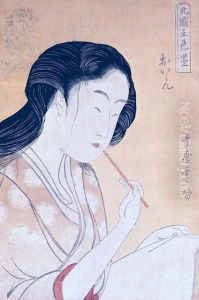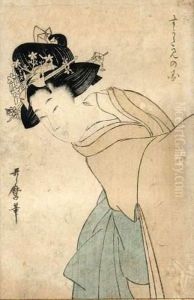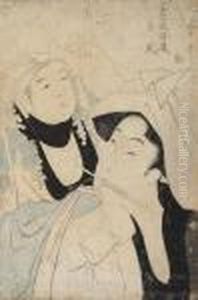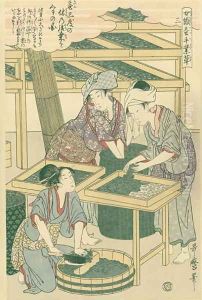





Feeding the silk worms, no.3 from Joshoku kaiko tewaza-gusa, c.1800
-
About Reproduction
Discover the allure of art with our faithful reproduction of "Feeding the silk worms, no.3 from Joshoku kaiko tewaza-gusa, c.1800", originally brought to life by the talented Kitagawa Utamaro. Unlike posters or prints, our hand-painted oil painting breathes an unique sense of depth and texture into your space. Every detail, every stroke, and every texture is meticulously recreated, paying the perfect homage to Kitagawa Utamaro and his artistic vision.
Owning this piece is more than just decoration - it's a statement of your refined taste in art. Let the vibrant colors and intricate details of this replica serve as a daily reminder of the beauty in our world. Elevate your decor and appreciate the richness of art with our replica of this masterpiece.
-
Painting Description
"Feeding the silk worms, no.3 from Joshoku kaiko tewaza-gusa, c.1800" is an exquisite woodblock print by the renowned Japanese artist Kitagawa Utamaro. Utamaro, who lived from 1753 to 1806, is celebrated for his bijin-ga, or "pictures of beautiful women," and his work often delves into the daily lives and intimate moments of women in Edo-period Japan. This particular print is part of a series titled "Joshoku kaiko tewaza-gusa," which translates to "Women Engaged in the Sericulture Industry." The series is a testament to Utamaro's keen observation and his ability to capture the intricacies of women's labor and their roles in traditional Japanese society.
The print depicts the meticulous process of feeding silkworms, an essential step in sericulture, which was a significant industry in Japan during the Edo period. The scene is rendered with Utamaro's characteristic elegance and attention to detail, showcasing the delicate balance between the natural world and human activity. The women in the print are portrayed with grace and poise, their movements fluid and purposeful as they tend to the silkworms. The composition is both dynamic and harmonious, reflecting Utamaro's mastery in capturing the essence of his subjects.
Utamaro's use of color and line work in this print is particularly noteworthy. The subtle gradations of color and the intricate patterns on the women's clothing highlight the artist's skill in woodblock printing. The attention to detail extends to the depiction of the silkworms and their environment, emphasizing the care and precision required in the sericulture process. This print not only serves as an artistic masterpiece but also as a historical document, providing insight into the cultural and economic practices of the time.
"Feeding the silk worms, no.3 from Joshoku kaiko tewaza-gusa" exemplifies Utamaro's ability to blend beauty with realism, offering a window into the lives of women and their contributions to traditional Japanese industries. It remains a significant work in the study of Japanese art and culture, reflecting the enduring legacy of Kitagawa Utamaro's artistic vision.
-
Lead Time & Shipping
When you order this oil painting replica, it typically takes 2-3 weeks to paint. If the artwork is more complex, it might need a little more time to ensure the best quality. Once it's ready, we'll send you a photo for your approval. After you give the green light, we'll ship it to you for free.
-
Return & Refund
We believe in the quality of our hand-painted oil painting reproductions, and your satisfaction is our priority. If for any reason, you are not completely satisfied with your purchase, we offer a 45-day return policy. You can return your artwork within 45 days of receipt and receive a full refund. Please note that the artwork must be returned in the original packaging and in the same condition as it was received.





